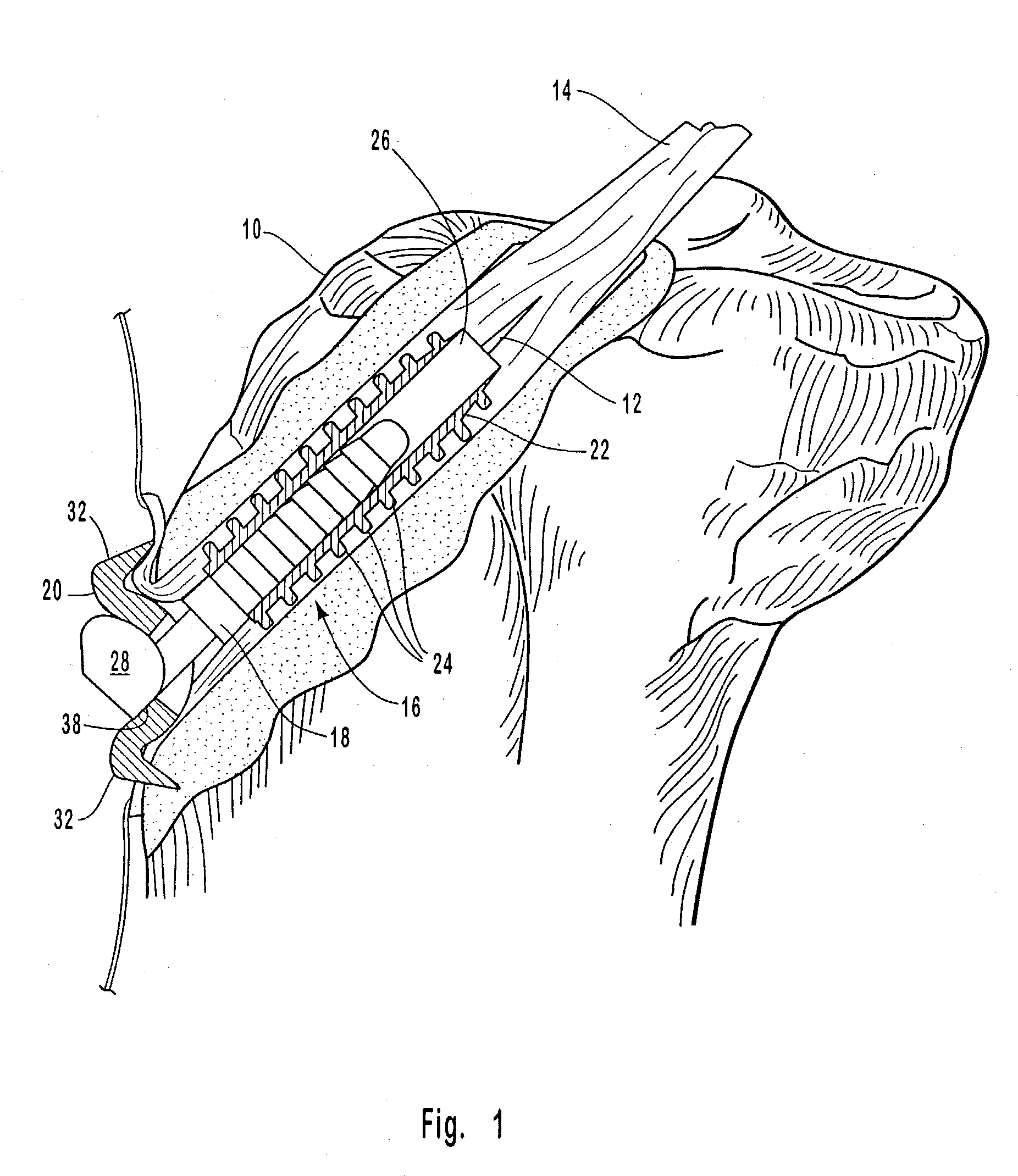In reality, however, the
knee joint provides complicated mechanical movements and maneuverability far more complex than a simple hinge mechanism in regards to the rotation and gliding motions that may occur at the joint.
Although the structure of the knee provides one of the strongest joints of the body, the knee is usually one of the most frequently injured joints.
Athletes and persons who perform tasks requiring a great deal of body rotation are the most susceptible to serious
ligament stressing and tearing at the
knee joint.
Unfortunately, many of the prior art methods of reconstructing and replacing damaged ligaments have generally proven inadequate for immediately restoring full strength and stability to the involved joint.
Furthermore, there has long been a problem of effectively fastening a ligament to a
bone surface for the duration of a ligament's healing process, which process involves the ligament graft growing to an adjoining
bone mass to restore mobility to the injured joint of an orthopedic patient.
For example, piercing and
puncturing of the ligament by the legs of the staples or other fixation devices may result in serious damage to the cross-fibers of the ligament or tissue.
Such damage may cause weakening in the tensile strength of the ligament and result in tearing along the cross-fibers of the ligament under normal
physical stress.
When
puncturing or tearing of cross-fibers occurs, the time required for the ligament to heal increases, which in turn results in a significant extension in the amount of time required to rehabilitate the knee joint before allowing the patient to return to normal daily activities.
Unfortunately, problems occur when trying to secure the threads of the suture to the anchoring device when a physician is working in restricted or confined areas.
After a period of time, significant disadvantages emerged wherein a number of the ligament grafts retained in
bone mass by the combination drilling / anchor devices began to rupture and tear at their fixation sites around the area where the ligament was in direct contact with the sharp outer edges of the opening of the channel formed in the bone.
For example, as replacement ligaments tolerate the stress and strain associated with normal
physical activity, the ligament generally begins to fatigue when wearing against the sharp outer edges of a bone channel opening.
This form of fatigue typically causes significant damage to the ligament by tearing or
cutting into ligament cross-fibers, thus, weakening the connection of the replacement ligament at its reattachment site.
Consequently, after a period of time, cross-
fiber fatigue, commonly known as "sun-dial" or "
windshield wiper" wear, may further result in dislocating the replacement ligament from its original fixation site.
Nevertheless, unfavorable disadvantages of ligament bending was observed by those skilled in the art as typically resulting in a force concentration at the location of the ligament bend generally causing the cross-fibers of the ligament to weaken, potentially subjecting the ligament to the possibility of further tearing or rupturing, as in the case of ligament sundial wear.
Additionally, exterior devices can rub and cause pain, requiring removal about 10% of the time.
Unfortunately,
puncturing, piercing and possible tearing generally results to the cross-fibers of the ligament when the ligament is in direct engagement with the sharp threads of the interference screw.
During flexion or extension of the ligament, tension loads tend to act against the fixation site of the ligament generally causing strain on the ligament against its fixation site.
Under such strain, the facing of the threads of the interference screw generally effect a pinching or piercing of the ligament which may cause tearing or
dislocation of the replacement ligament under the stress associated with normal physical activities.
Although the use of a patella
tendon bone block provides a number of advantages, especially when dealing with fixation of the replacement ligament, the harvesting of a patella
bone block typically results in extensive morbidity to the knee joint, requiring a considerable amount of time for the knee joint to heal, before a patient can resume any normal
physical activity.
Unfortunately, significant disadvantages remain with all the presently known devices and methods offered by the prior art.
In such an arrangement, the method causes spikes to embed in the outside cortex of the
bone tunnel.
 Login to View More
Login to View More  Login to View More
Login to View More 


